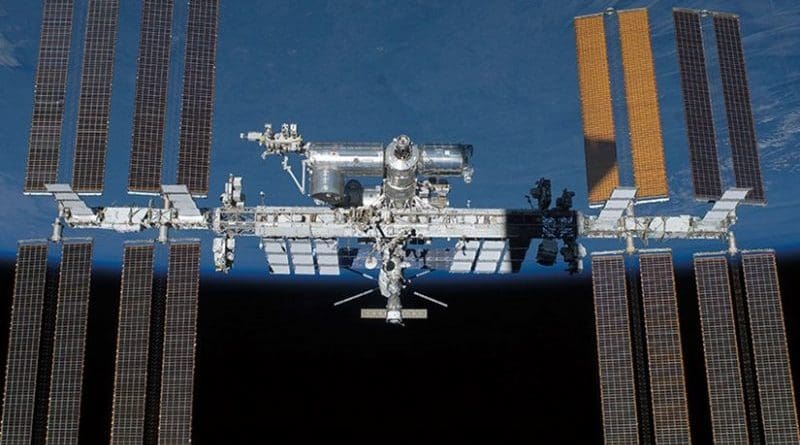Resilience Thinking For Outer Space Security – Analysis
By Observer Research Foundation
By Jessica West*
It’s no surprise that tensions are rising about security in outer space, because spacecraft are critical but vulnerable assets. The prevailing response in the West has been to rely on such familiar military strategies as deterrence.
Although to “deter and defeat threats in space” is the raison d’être of the proposed U.S. Space Force, deterrence should have only a limited role in military space strategy. Too much emphasis on deterrence risks fuelling an arms race in space. The essential “or else” premise of deterrence imbues it with offensive undertones and encourages confrontation.
Instead, we need to think more about resilience.
What is resilience?
The idea of resilience has informed military thoughts on space for some time. Core concepts in the 2015 U.S. White Paper Space Domain Mission Assurance: A Resilience Taxonomy includes protection, proliferation, disaggregation, diversification, distribution, and deception. Here the focus is on new space architecture. In this approach, space systems are designed to be less vulnerable to harmful interference. By mitigating vulnerabilities, the goal is to also bolster deterrence.
Designing satellite systems that are less vulnerable to disruption is laudable. But the benefits of resilience will be greater if we think beyond deterrence and system hardware.
While complimentary, resilience is a fundamentally different logic than deterrence. I liken resilience to a strategy of containment. Resilience is not about influencing the external environment to prevent certain effects or about reducing vulnerability per se. Instead, resilience involves mitigating the effects of disruptions that do occur and maintaining the core functions and identity of a system. It works by integrate the layers and components of a system into real-time surveillance and control practices to detect and contain disorder. It is both physical and social.
As a systems approach to defence, resilience can be scaled up or down. If we scale up, we can think beyond individual space systems to building global resilience in outer space.
Scaling up resilience
I manage and edit the Space Security Index series of reports. The focus of this project is the security of outer space as an environment that can be used by all safely and sustainably, free from threats. This approach to security is ripe for resilience thinking, because if humans want to continue to use outer space, we must learn to detect and control the effects of the many hazards found there.
To this end, a resilience approach enables an “all-hazards” response to dangers in space. While the risk of deliberate harm to space systems is real, operators face an array of potential disruptions and damage from space weather and debris, as well as accidental interference. These cannot be deterred, but they can be detected, and their effects contained. Likewise, resilience is useful in the face of deliberate interference, which can be difficult to distinguish and thus to deter.
Approaching these challenges collectively can generate greater resilience. We can see elements of this approach that are already in place, such as interoperability agreements between providers of global navigation services, which help to contain the effects of disruptions to individual capabilities. By emphasizing cooperation and data sharing, mutual resilience could also facilitate arms control and conflict prevention measures.
Resilience and arms control
The relationship between resilience and arms control is complicated. When embedded in a narrow, national approach to deterrence, resilience might be seen as an attempt to achieve invulnerability and thus reduce the incentive for arms control. But this shouldn’t be the case.
A resilience framework cannot mitigate all risk. There are limits to the ability to detect and contain emerging threats and disruptions. Space systems are particularly susceptible to the application of external force. The resulting debris could damage swaths of the space environment. Arms control and efforts to de-escalate the risk of conflict in space remain essential. However, a focus on resilience could make such efforts more appealing by alleviating concerns linked to limited modes of monitoring and verification. The starting point is space situational awareness (SSA).
System surveillance – particularly the ability to detect an anomaly or disruption early – is critical for resilience. In space, this is done via sensors on individual spacecraft, and through SSA of the whole space environment—an incredible task. The United States has by far the most advanced capability, and engages in extensive but selective data-sharing. A global approach to surveillance remains elusive, even though it would contribute significantly to the resilience of outer space activities, providing more comprehensive data for early warning to all actors, and facilitating the ability to objectively identify and respond to suspicious behaviour or hardware in space.
More global approaches are emerging for SSA in relation to asteroid early warning and space weather mitigation. This logic should extend to human made hazards. Just as “eyes in the sky” are critical for early warning capabilities linked to nuclear deterrence and arms control, “eyes on the sky” are a critical step for building resiliency that can contain conflict in space.
New thinking
Threats in space are many, complex, and often indiscriminate. Thinking about resilience – the ability to detect and contain the effects of disorder and disruptions – is necessary. While clearly a part of national defence strategy in outer space, there is an opportunity to leverage this concept to bring new thinking to the security of outer space and the collective challenges that we face in this domain.
This article originally appeared in Space Alert.

